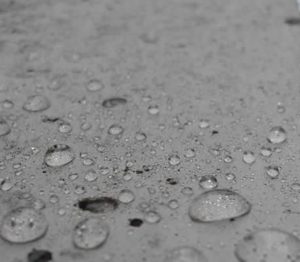WaterProofing Concrete, Walls and Floors
A badly made concrete cannot be made waterproofing, to the penetration of water by any admixtures. The first requisite for waterproofing concrete, is to obtain a dense concrete with well-proportioned non-porous aggregates, and with low water/cement ratio (0.54 or less) so as to have a minimum of air voids. Normally all concretes are porous, and these pores have to be reduced to make the concrete, as far as possible, impermeable to Water.
Methods of making good concrete as detailed. It is often beneficial to use a slightly excessive proportion of fines. A small increase in cement content over that used for ordinary concrete is also advantageous as with more of cement less of water is required for the Same workability. The following methods can be used for further waterproofing.
(a) Concrete and masonry surfaces can be made waterproof by giving three alternate coats of alum and soap solutions. 10 grams of alum is dissolved in one litre of hot water, and 50 grams soap is dissolved in one litre of hot water. The hot alum solution is applied first and worked, in with a stiff’ brush immediately followed by hot soap solution. The solutions are applied with an interval of about 24 hours between alternate coats.
Recent experiments have indicated that a cement plaster (even 1:6) can be made waterproof by mixing the cement mortar in a 1 per cent soap solution instead or ordinary water. “Sunlight” soap was used in the experiment.
Soap solutions act as lubricants and also form insoluble fillers by reaction with cement and may be applied while he concrete is still green.
Walls can be effectively treated against moisture penetration by these methods.
(b) Addition of fully slaked (hydrated) white lime in the following proportions will also make the concrete water-proof. Lime paste occupies about twice the bulk of paste made with equal weight of cement and is therefore very efficient in void filing ; but the mixture must be of dense concrete.
1:2:4 concrete — 10% of the weight of dry cement
1:2.5:5 concrete —15% of the weight of dry cement
The addition of hydrated lime increases workability but it is nevertheless an adulterant and where strength is a primary consideration the use of higher cement content should be preferred for increasing workability and achieving impermeability. (Some of the experiments have shown that addition of a small quantity of hydrated lime slightly increases the strength of a concrete, but there are conflicting views about this point.) Increase of workability permits a slight reduction in water content, which in turn reduces permeability.
Make concrete rich to have at least 15.to 20 percent excess cement over sand and 20 per cent excess mortar over coarse aggregate. A 1:1.5:3 mix with water/cement ratio of about 0.40 will make the concrete practically water-proof.
Rendering with mortar consisting of cement, hydrated lime and sand in the proportions 1:3:10, 12mm thick will also make concrete waterproof.
(e) The form-work should be removed as soon as practicable and the concrete surface rubbed smooth and washed. A mixture of cement and sand of proportions 1:1.5 with some waterproofing compound should be worked into the pores and over the whole surface in such a manner that no more material is left on the concrete face than is necessary to fill the pores completely.
(d) Concrete floors may be treated during concreting operation with. dry cement sprinkled over the surface and worked in with a steel trowel on the initial set of the concrete.
(e) As regards surface application of a water-proofer the method depends on the quality of the concrete. If pores are very small, silt or fine clay may fill them. Boiled linseed oil, paraffin, or varnish, can be brushed on the surface when the concrete has been well cured and has dried. Two or three coats may be applied allowing each to dry before the next application. A coat or two of bitumen or coal tar makes the surface impermeable to water ; concrete must be perfectly dry and dust free ; a thin priming coat (of bituminous material) should be given to ensure bond. 50 to 60 litres per 10 sq. m of bitumen are required.
(f) Bituminous Mastics are generally laid on horizontal surfaces and also toweled on vertical surfaces. They are used either hot or cold. (An asphalt lining has the disadvantage that it insulates the floor from the beneficial effects of saturation, thus increasing the tendency to develop cracks, the asphalt is liable to fail ultimately over such cracks and construction joints).
(g) Proprietary compounds such as Pudlo, Medusa, Ceresit or Ironite are used according to the manufacturers’ instructions, not exceeding 1.5 kg/50 kg (one bag) of cement.
Inert materials used include finely divided chalk, Fuller’s earth and talc, all of which Consist of very fine particles. They assist in making the concrete dense, especially if the aggregate is deficient in fines.
(h) Treatment with silicate or soda.
(i) One kg of washing soda dissolved ¡n 30 litres of mixing water will make a cement mortar water-proof.
Related Tags:
concrete water proofing – moisture vapor control – concrete repair – concrete foundations – waterproofing concrete-water proofing options-concrete waterproofing-home improvement- roof- construction- cement- waterproof- waterstop- crack-joints – coating – admixture – Treatment – sealers

